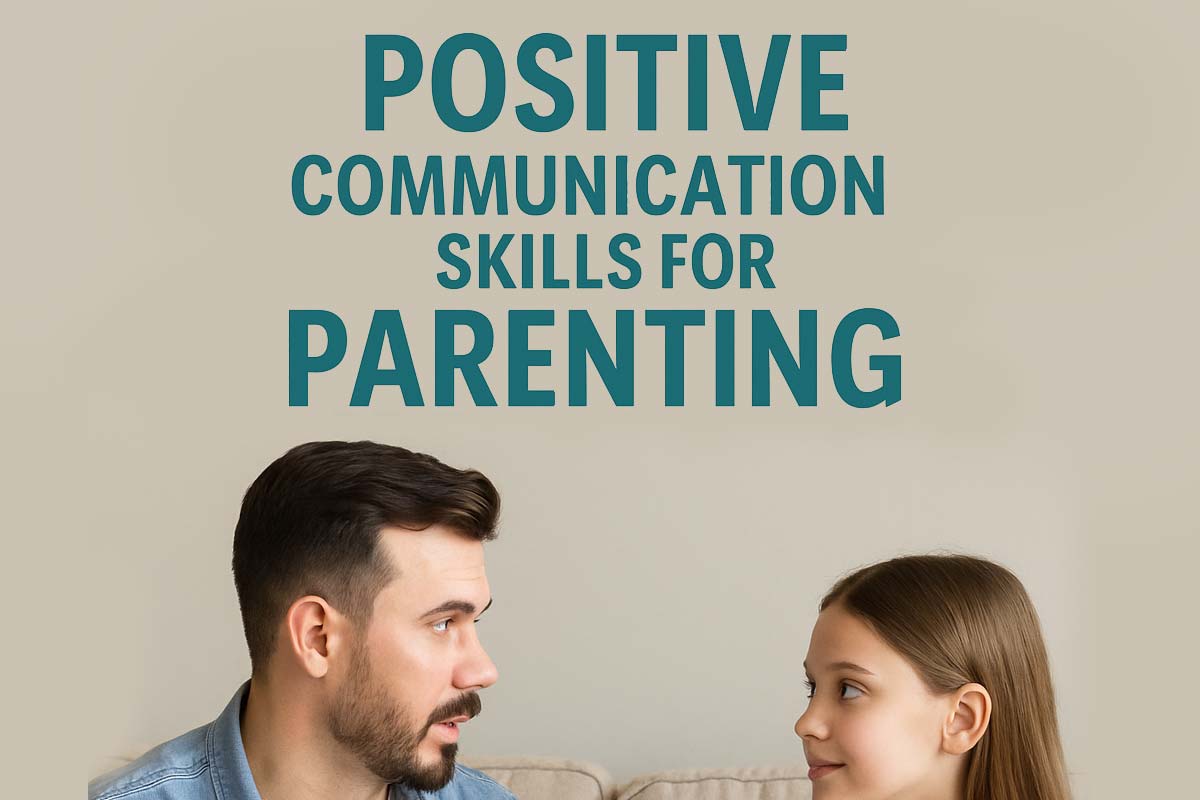
Positive Communication Skills for Parenting
Parenting is as much about what we say as what we do. The way you communicate with your child shapes their sense of self, their trust in you, and their ability to handle emotions. Building positive communication skills for parenting is one of the most powerful ways to create connection, reduce conflict, and raise emotionally healthy children.
This article explores practical, effective ways to communicate with your child based on James A. Baker’s Positive Parenting philosophy—where mutual respect, empathy, and clear expectations lead the way.
Why Positive Communication Matters in Parenting
When communication is respectful and clear, it opens the door for cooperation and trust. Children feel safe to express themselves, and they’re more likely to listen and respond when they know their voice matters too.
Positive communication isn’t about being soft—it’s about being strong and kind at the same time. It’s about modeling the behavior you want to see and helping your child develop the skills they’ll need in all areas of life.
Common Communication Pitfalls (And What to Do Instead)
1. Yelling or Harsh Tone
Shouting may get immediate compliance, but it damages trust and increases anxiety in children.
Try This Instead: Use a calm, steady voice. Speak at your child’s eye level. When needed, pause before you respond to regain your own emotional balance.
2. Not Listening or Interrupting
Children want to be heard. When they feel dismissed, they may shut down or act out.
Try This Instead: Practice active listening—maintain eye contact, nod, and reflect back what you hear: “So you’re upset because your toy broke?”
3. Giving Mixed Messages
If rules or expectations aren’t clearly communicated, children get confused and may ignore directions.
Try This Instead: Be specific and consistent: “You can play after your homework is finished.” Avoid vague commands like “Be good.”
Core Positive Communication Skills for Parenting
James A. Baker’s Positive Parenting approach teaches us that communication is a two-way street. You’re not just directing your child—you’re building a relationship.
1. Use "I" Statements
Say what you feel and need without blaming. For example, “I feel frustrated when toys are left on the floor because someone could trip.” This invites problem-solving instead of defensiveness.
2. Validate Feelings
Even when a child’s emotions seem over-the-top, acknowledge them: “It sounds like you’re really disappointed right now.” Validation builds emotional intelligence and trust.
3. Encourage Problem-Solving
Instead of telling children what to do all the time, invite them into the process: “What do you think we could do differently next time?”
4. Be Clear and Brief
Too many words can overwhelm kids. Use short, clear instructions and follow up with a supportive tone.
5. Offer Praise with Purpose
Focus on effort, not perfection: “I saw how hard you worked to clean your room. That shows responsibility.” This builds intrinsic motivation and confidence.
Positive Communication Across Ages
For toddlers: Keep it simple and use visual cues or choices: “Do you want to brush teeth before or after pajamas?”
For school-aged children: Encourage more dialogue. Ask open-ended questions and involve them in decisions when appropriate.
For teens: Respect their growing independence while staying engaged. Listen more than you speak. Avoid lectures and focus on mutual respect.
Strengthen Your Parenting with Support
Improving your communication with your child can transform your entire family dynamic. Our Online parenting classes are designed to help you learn and apply Positive Parenting tools in real-life situations—whether you're navigating daily routines or more serious challenges.
Final Thoughts
Communication is the heart of parenting. By choosing words that teach, connect, and guide, you can create a home where your child feels safe, respected, and understood. It’s not about perfection—it’s about progress and presence.
Start building stronger bonds today with positive communication that empowers both you and your child.